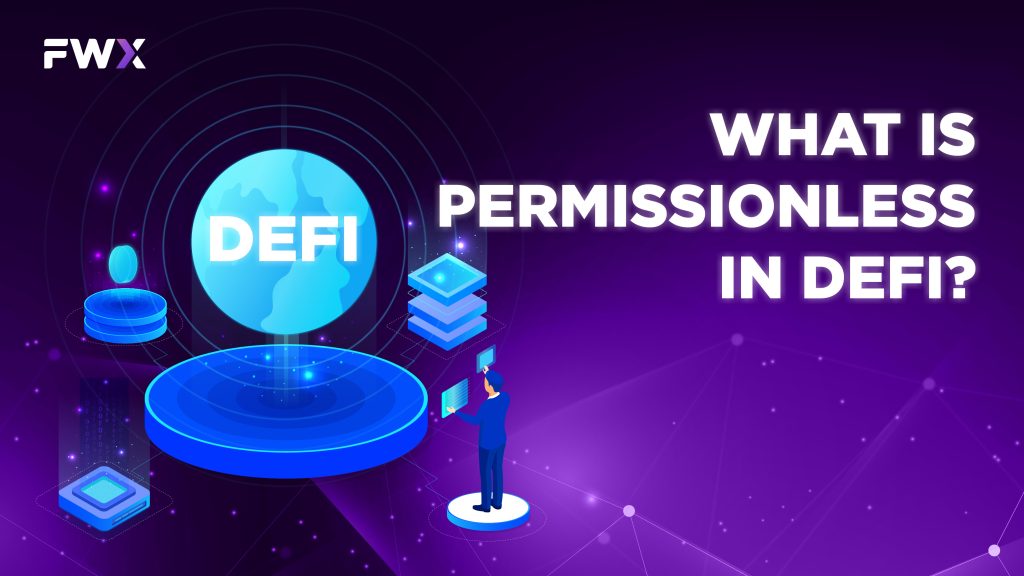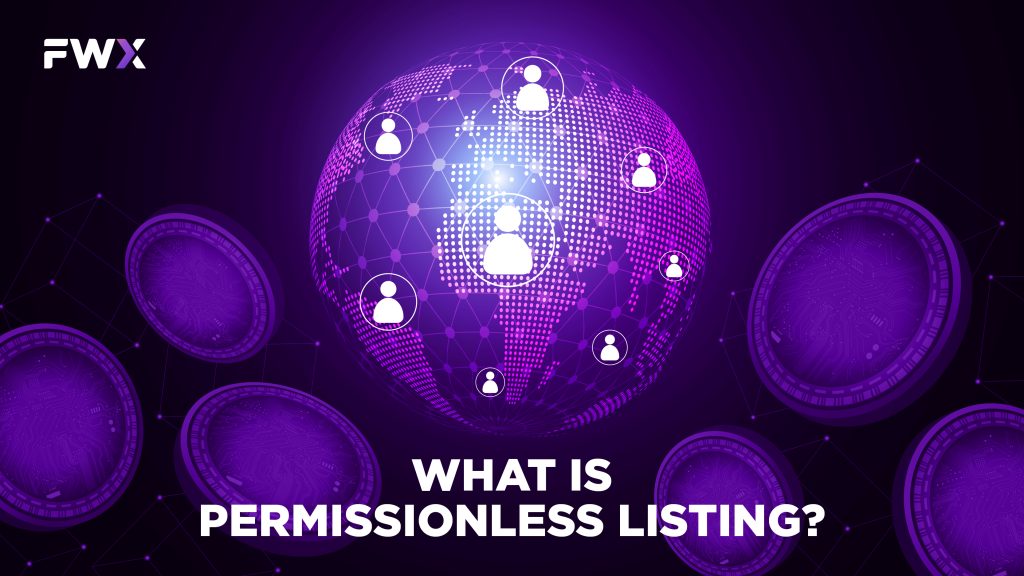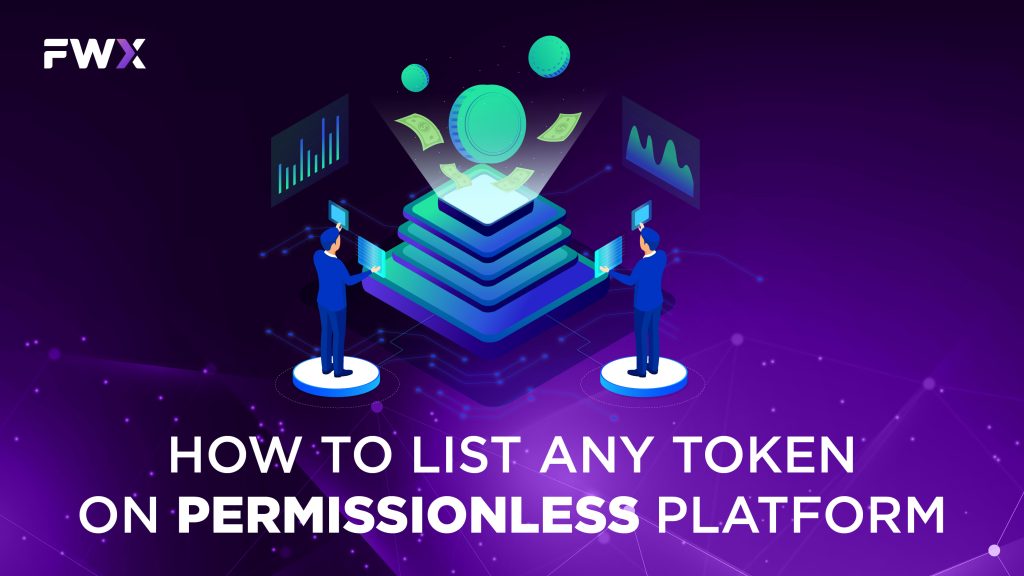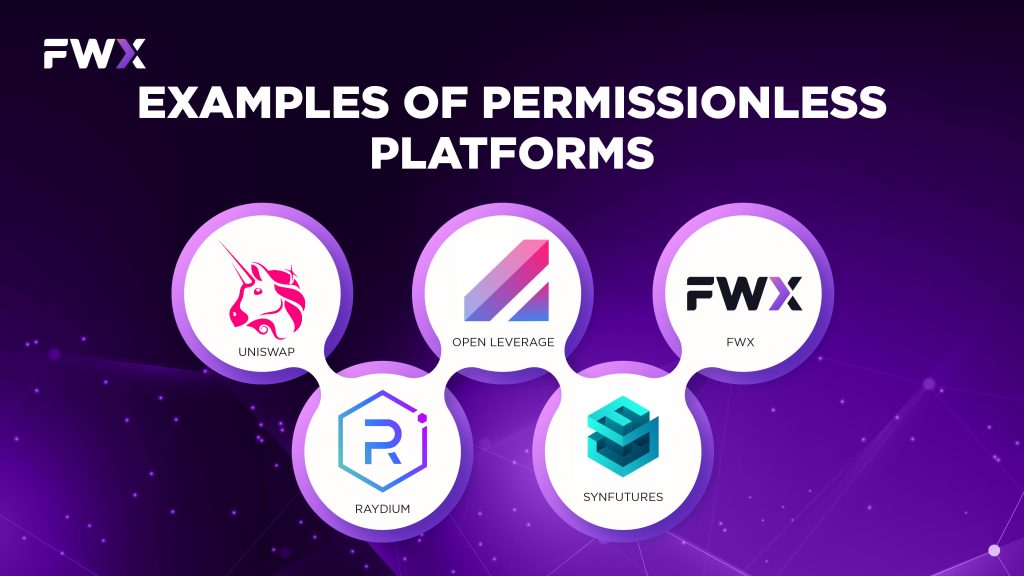In the rapidly evolving world of decentralized finance (DeFi), permissionless listing has emerged as a fundamental concept, reshaping how tokens are introduced and traded. By allowing projects and individuals to list tokens on decentralized platforms without centralized approval, permissionless listing democratizes access to financial markets, driving innovation and inclusivity. This overview delves into the essence of permissionless listing, highlighting its importance, types, notable examples, and the inherent benefits and risks within the DeFi landscape.
What is Permissionless in DeFi?

Permissionless refers to a fundamental principle that underpins the entire ecosystem. Essentially, it means that participants can engage in financial activities without needing approval from any central authority or intermediary. This stands in stark contrast to traditional finance, where accessing financial services often involves navigating through layers of bureaucracy and obtaining permission from banks, regulatory bodies, or other gatekeepers.
In a permissionless DeFi system:
- Access to Services: Anyone with an internet connection and compatible digital wallet can access and use DeFi services. There are no requirements for identity verification or credit checks.
- Creation of Financial Products: Developers and users can create new financial products and services without seeking permission from any central authority. This fosters innovation and allows for the rapid iteration and improvement of DeFi protocols.
- Interacting with Smart Contracts: DeFi platforms operate using smart contracts, which are self-executing contracts with the terms of the agreement directly written into code. Users can interact with these smart contracts without intermediaries, enabling trustless transactions.
- Financial Inclusion: Permissionless DeFi opens up financial services to individuals who may be excluded from traditional financial systems due to factors such as location, lack of documentation, or limited access to banking services.
- Global Accessibility: DeFi platforms are accessible to anyone with an internet connection, regardless of their geographical location. This allows users from around the world to participate in DeFi markets and access financial opportunities.
What is Permissionless Listing?

Permissionless listing refers to the process of adding new tokens or assets to a decentralized exchange (DEX) or DeFi platform without requiring approval from a central authority or intermediaries. In traditional finance, listing a token on an exchange often involves a lengthy and centralized approval process, where exchanges review the token’s credentials, compliance, and market demand before deciding whether to list it.
In contrast, permissionless listing in DeFi allows anyone to list a token on a compatible platform, provided they adhere to the platform’s protocol and requirements. This means that developers, projects, or token holders can create liquidity pools, initiate trading pairs, and make their tokens available for trading without seeking permission from a centralized authority.
Permissionless Listing vs Token Listing on CEX: What are the differences?
Permissionless listing and token listing on CEX represent two distinct approaches to adding tokens or assets to a trading platform. Here’s a breakdown of the key differences between permissionless listing and token listing:
Permissionless Listing:
- Decentralized Approval: In permissionless listing, tokens can be added to a decentralized exchange (DEX) or DeFi platform without requiring approval from a central authority or intermediaries. The process is governed by smart contracts and community consensus rather than centralized decision-making.
- No Barrier to Entry: Anyone can list a token on a platform that supports permissionless listing, provided they adhere to the platform’s protocol and requirements. There are typically no eligibility criteria or approval processes imposed by a central authority.
- Instant Availability: Tokens listed via permissionless listing are available for trading immediately after the liquidity pool is created and the trading pair is established. This allows for rapid access to a wide range of assets without delays.
- Decentralized Governance: Permissionless listing aligns with the principles of decentralization, as decisions related to token listing are often made through decentralized governance mechanisms, such as token holder voting or community proposals.
Token Listing on CEX:
- Centralized Approval: Token listing involves seeking approval from a centralized authority or exchange before a token can be added to the platform. Exchanges typically have strict criteria, including compliance, liquidity requirements, and market demand, which tokens must meet to be listed.
- Barrier to Entry: Token listing on centralized exchanges often comes with barriers to entry, such as application fees, compliance checks, and extensive documentation requirements. Not all tokens are eligible for listing, and the process can be selective and exclusive.
- Processing Time: Token listing on centralized exchanges can take time, as tokens need to undergo review and approval processes. This can result in delays before the token becomes available for trading on the platform.
- Centralized Decision-Making: Token listing decisions are made by a centralized authority, such as the exchange’s listing committee or management team. This centralized approach contrasts with the decentralized governance seen in permissionless listing.
How to list any token on permissionless platform

Listing a token on a permissionless platform involves several steps, but the process is generally straightforward and accessible to anyone. Below is a guide on how to list any token on a permissionless platform like Uniswap, one of the most popular decentralized exchanges (DEXs) in the DeFi ecosystem:
- Understand the Platform Requirements:
Before listing your token, ensure that it complies with the standards supported by the platform. For instance, Uniswap primarily supports ERC-20 tokens, so your token should be compatible with the Ethereum blockchain and adhere to the ERC-20 standard.
- Set Up a Wallet:
To interact with decentralized platforms like Uniswap, you’ll need a compatible Ethereum wallet. Popular options include MetaMask, Trust Wallet, or Coinbase Wallet. Install your chosen wallet extension or application and create a new Ethereum wallet if you haven’t already.
- Add the Token Contract Address:
Obtain the contract address of the token you want to list. You can typically find this information on the token’s official website or through blockchain explorers like Etherscan. Once you have the contract address, add the token to your wallet by selecting the “Add Token” option and entering the contract address.
- Access the Decentralized Exchange:
Visit the website of the decentralized exchange you want to list your token on. In this example, let’s use Uniswap. Ensure that you’re accessing the correct URL to avoid phishing scams.
- Connect Your Wallet:
On the Uniswap interface, connect your Ethereum wallet by clicking on the “Connect Wallet” button. Follow the prompts to connect your wallet, and select the wallet you previously set up.
- Initiate the Listing:
Once your wallet is connected, you can initiate the listing process. Navigate to the “Pool” tab on Uniswap and select the “Add Liquidity” option. Choose the token you want to list from the dropdown menu and specify the amount you want to provide as liquidity.
- Provide Liquidity:
To list your token, you’ll need to provide liquidity by depositing an equivalent value of another token into the liquidity pool. Uniswap operates on a pair-based liquidity model, so you’ll need to provide liquidity in the form of a token pair (e.g., ETH/YourToken).
- Create the Pool:
After providing liquidity, follow the on-screen instructions to create the liquidity pool. Confirm the transaction using your wallet, and wait for the transaction to be confirmed on the Ethereum blockchain.
- Verify the Listing:
Once the transaction is confirmed, your token will be listed on Uniswap, and users will be able to trade it against the paired token. You can verify the listing by searching for your token on Uniswap or using blockchain explorers to view the liquidity pool.
Types of Permissionless Market
In the realm of decentralized finance (DeFi), permissionless markets offer various types of financial products and services without the need for centralized control or approval. Here are three common types of permissionless markets:
Spot
Spot markets, also known as cash markets, are where assets are bought and sold for immediate delivery. In DeFi, spot markets operate similarly to traditional exchanges, allowing users to trade digital assets at current market prices without the need for intermediaries. Participants can exchange one cryptocurrency for another or trade cryptocurrencies for fiat currencies. Spot markets play a crucial role in providing liquidity and price discovery in the DeFi ecosystem.
Futures
Futures markets enable users to speculate on the future price of an asset without owning the underlying asset. In DeFi, futures markets operate through smart contracts, allowing users to enter into contracts to buy or sell an asset at a predetermined price on a future date. Futures contracts in DeFi can be settled in cryptocurrency or stablecoins, providing opportunities for hedging, speculation, and risk management. Unlike traditional futures markets, DeFi futures markets often operate on a permissionless basis, allowing anyone to create or participate in contracts without requiring approval from centralized authorities.
Perpetual
Perpetual markets are a type of futures contract that does not have an expiry date, allowing traders to hold positions indefinitely. In DeFi, perpetual markets are commonly used for leveraged trading of cryptocurrencies. Perpetual contracts mimic the behavior of traditional futures contracts but do not require settlement at a future date. Instead, they use a funding mechanism to ensure the contract price tracks the spot price of the underlying asset. Perpetual markets offer traders the ability to use leverage to amplify their trading positions, increasing both potential profits and risks.
Examples of Permissionless Platforms

Uniswap
Uniswap is one of the pioneering decentralized exchanges (DEXs) in the DeFi space. It operates entirely on smart contracts and allows users to swap various Ethereum-based tokens directly from their wallets without the need for intermediaries. Uniswap uses an automated market maker (AMM) model, where liquidity providers contribute funds to liquidity pools, enabling users to trade against these pools. It’s known for its simple user interface, low fees, and permissionless nature, making it a popular choice for decentralized token swaps.
Raydium
Raydium is a decentralized exchange and liquidity provider built on the Solana blockchain. It offers fast transactions and low fees. Raydium allows users to trade various tokens, provide liquidity to pools, and participate in yield farming and staking activities. Its permissionless nature enables anyone to list tokens and create liquidity pools, fostering liquidity and trading opportunities in the Solana ecosystem.
Open Leverage
Open Leverage is a permissionless leverage trading platform that operates on the Ethereum blockchain. It allows users to trade leveraged positions on various assets, including cryptocurrencies and synthetic assets. Open Leverage utilizes decentralized margin trading and lending protocols, enabling users to borrow funds and trade with leverage without the need for intermediaries. Its permissionless nature gives traders greater control over their positions and allows for innovative trading strategies.
SynFutures
SynFutures is a decentralized derivatives trading platform that allows users to trade futures and options contracts on various assets, including cryptocurrencies and commodities. It operates on Ethereum and uses smart contracts to facilitate trading and settlement. SynFutures offers customizable contracts and automated market-making algorithms, providing users with flexibility and liquidity. Its permissionless nature enables anyone to create and trade derivative contracts without centralized approval.
FWX
FWX is an AMM-based leveraged swap platform that enables users to list tokens from their inception by providing liquidity. FWX supports leverage trading, lending pools, and our unique hedging algorithm ensures that liquidity providers are not obligated to offer liquidity in pairs, shielding them from impermanent loss and other potential losses tied to traders’ profit and loss.
Benefits and Risks of Permissionless Listing
Benefits:
- Decentralization: Permissionless listing aligns with the core principles of decentralization by allowing anyone to list tokens on decentralized exchanges (DEXs) without relying on centralized authorities or intermediaries. This fosters a more inclusive and open financial ecosystem.
- Accessibility: Permissionless listing democratizes access to financial markets, enabling projects of all sizes and from various geographical locations to list their tokens and participate in the global economy. It lowers barriers to entry and promotes financial inclusion by providing opportunities for both established and emerging projects.
- Innovation: Permissionless listing encourages innovation within the DeFi space by empowering developers, entrepreneurs, and communities to experiment with new token models, financial products, and trading strategies. It spurs creativity and diversity in the types of assets available for trading, ultimately driving the evolution of DeFi.
- Community Governance: Many permissionless platforms incorporate community-driven governance mechanisms, such as token holder voting, to make decisions about token listing and platform upgrades. This decentralization of governance gives stakeholders a voice in shaping the future direction of the platform and enhances transparency and trust.
- Lower Costs: Compared to traditional methods of token listing on centralized exchanges, permissionless listing typically involves lower costs and fewer bureaucratic hurdles. This reduces the financial burden on projects and incentivizes greater participation in the DeFi ecosystem.
Risks:
- Scams and Fraud: The permissionless nature of DeFi can make it easier for malicious actors to create and list fraudulent or low-quality tokens. Investors may fall victim to scams, rug pulls, or pump-and-dump schemes if they do not conduct thorough due diligence before investing in listed tokens.
- Lack of Regulation: DeFi operates in a relatively unregulated environment compared to traditional finance, which can expose users to regulatory uncertainty and potential risks. The absence of regulatory oversight may lead to legal challenges, regulatory scrutiny, or changes in compliance requirements that could impact listed tokens and platforms.
- Smart Contract Risks: Permissionless platforms rely on smart contracts to facilitate token listing and trading. However, smart contracts are not immune to bugs, vulnerabilities, or exploits. A flaw in the smart contract code could result in financial losses for users or the manipulation of token prices.
- Market Volatility: Permissionless listing may contribute to market volatility, especially for newly listed tokens with low liquidity. Price fluctuations and unpredictable market behavior can pose risks to investors and traders, particularly those engaging in speculative trading or leveraging their positions.
- Limited Quality Control: Unlike centralized exchanges that conduct thorough due diligence and compliance checks before listing tokens, permissionless platforms may lack quality control mechanisms. This can result in a proliferation of low-quality or fraudulent tokens, undermining trust and confidence in the DeFi ecosystem.
Conclusion
In conclusion, permissionless listing in the decentralized finance (DeFi) ecosystem provides numerous benefits, including decentralization, accessibility, and innovation. It democratizes access to financial markets, fosters community governance, and lowers barriers to entry for projects of all sizes. However, it also presents risks such as scams, regulatory uncertainty, smart contract vulnerabilities, market volatility, and limited quality control. Despite these risks, permissionless listing remains a key driver of growth and innovation in DeFi, empowering individuals and communities to participate in a more inclusive and open financial ecosystem. Users should exercise caution, conduct thorough research, and practice risk management when engaging in permissionless markets and investing in listed tokens.


